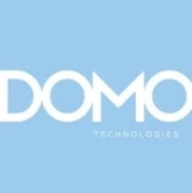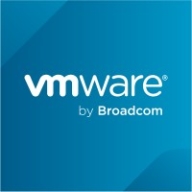

Domo and Spring Cloud Data Flow both compete in the data analytics and workflow management category. Domo is preferred for ease of use and user-friendly visualizations, whereas Spring Cloud Data Flow is advanced in handling complex data workflows and integrations.
Features: Domo offers an integrated platform with multiple analytics tools, ease of data access across devices, and rapid prototyping. Its simplicity allows non-technical users to engage with data visualizations. Spring Cloud Data Flow excels in stream processing and orchestrating complex data workflows. It integrates easily with other cloud services, providing a comprehensive environment for data handling.
Room for Improvement: Domo needs enhancements in visualization capabilities, technical support, and data source integrations. Users desire more control over data refreshes and advanced customization. Spring Cloud Data Flow would benefit from better documentation, expanded language support, and improved community involvement, focusing on user support and resource management for complex setups.
Ease of Deployment and Customer Service: Domo is favored in hybrid cloud deployments but receives mixed reviews in customer service, with strong initial support that may wane over time. Spring Cloud Data Flow often faces challenges in user support and technical setup, though primarily used in private environments.
Pricing and ROI: Domo is considered expensive yet valuable due to its extensive features and performance impact, offering a high ROI with process automation. Spring Cloud Data Flow, being open-source, provides cost-effective solutions with flexibility in stream processing, appealing to budget-conscious users needing robust data workflows.
| Product | Market Share (%) |
|---|---|
| Spring Cloud Data Flow | 1.2% |
| Domo | 0.7% |
| Other | 98.1% |


| Company Size | Count |
|---|---|
| Small Business | 16 |
| Midsize Enterprise | 11 |
| Large Enterprise | 20 |
| Company Size | Count |
|---|---|
| Small Business | 3 |
| Midsize Enterprise | 1 |
| Large Enterprise | 5 |
Domo is a cloud-based, mobile-first BI platform that helps companies drive more value from their data by helping organizations better integrate, interpret and use data to drive timely decision making and action across the business. The Domo platform enhances existing data warehouse and BI tools and allows users to build custom apps, automate data pipelines, and make data science accessible for anyone through automated insights that can be shared with internal or external stakeholders.
Find more information on The Business Cloud Here.
Spring Cloud Data Flow is a toolkit for building data integration and real-time data processing pipelines.
Pipelines consist of Spring Boot apps, built using the Spring Cloud Stream or Spring Cloud Task microservice frameworks. This makes Spring Cloud Data Flow suitable for a range of data processing use cases, from import/export to event streaming and predictive analytics. Use Spring Cloud Data Flow to connect your Enterprise to the Internet of Anything—mobile devices, sensors, wearables, automobiles, and more.
We monitor all Data Integration reviews to prevent fraudulent reviews and keep review quality high. We do not post reviews by company employees or direct competitors. We validate each review for authenticity via cross-reference with LinkedIn, and personal follow-up with the reviewer when necessary.